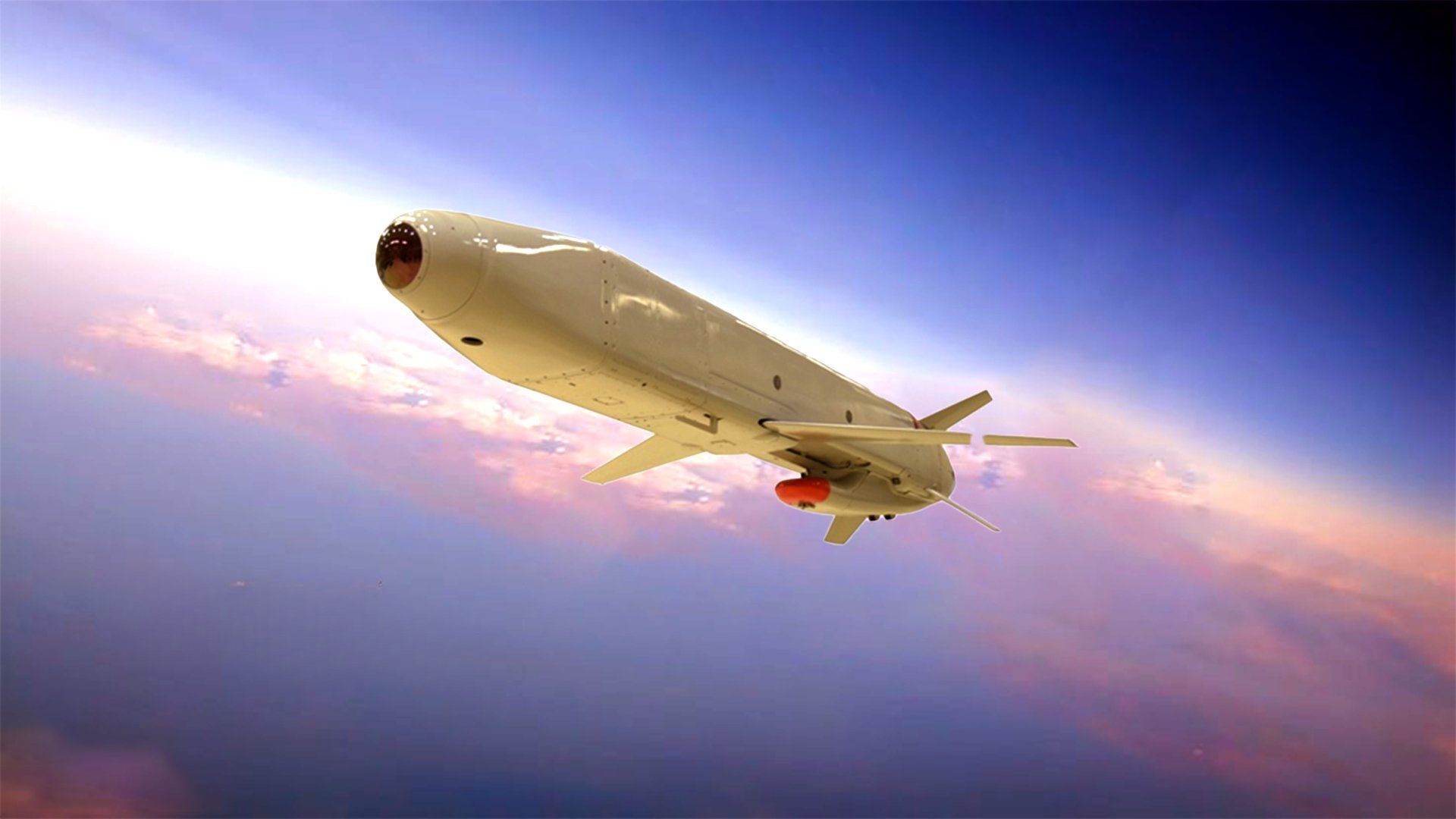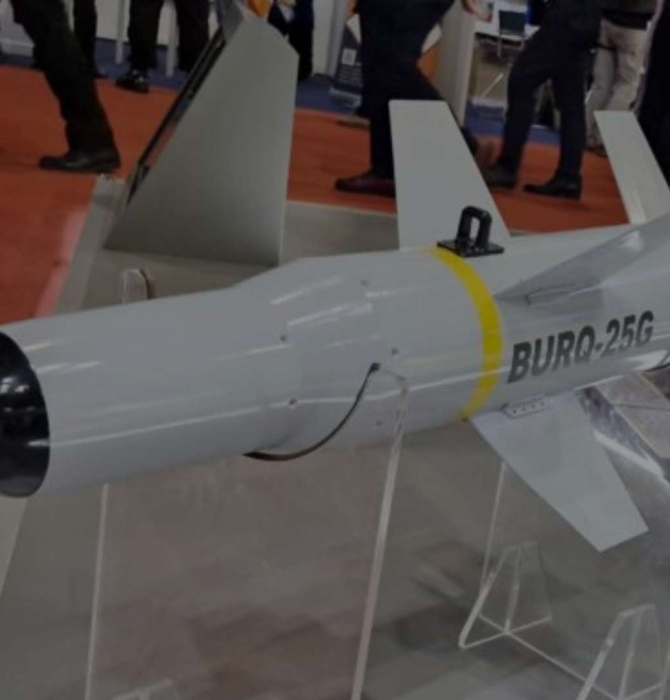7252Views

GIDS Taimoor Air-Launched Cruise Missile (ALCM)
Global Industrial & Defence Solutions (GIDS) first revealed the Taimoor air-launched cruise missile (ALCM) at the 2022 International Defence Exhibition and Seminar (IDEAS 2022).
Like its sibling weapon, the GIDS Harbah NG anti-ship cruising missile (ASCM), the Taimoor is being promoted for export. The Taimoor is capable of both land-attack and anti-ship roles.
GIDS Taimoor Design Background
The GIDS Taimoor is likely an export variant of the Air Weapons Complex (AWC) Ra’ad-II, one of the Pakistan Air Force’s (PAF) ALCMs.
The two missiles share several design features, notably, the “X”-type tail control surfaces, mid-body foldable wings, and underslung air-inlet for a miniature turbojet engine. Likewise, the Taimoor also uses some low-observability (LO) design attributes in its airframe, which are aimed at reducing its radar cross-section (RCS).
However, the Ra’ad-II has a range of 550-600 km. To comply with the Missile Technology Control Regime’s (MTCR) guidelines, the Taimoor’s range was capped to 290 km. Despite that, however, the Taimoor still leverages many of the key technologies of the Ra’ad-series, like terrain-hugging flight and guidance systems, which include TERCOM and DSMAC.
Therefore, the GIDS Taimoor is a credible long-range strike solution, one that can still drive strategic impacts for its end-users, despite the range limitation.
Finally, it is likely that AWC is reusing many of the same core inputs for its stand-off range weapons (SOW). For example, the GIDS Taimoor could be using the same turbojet engine and guidance stack of the Harbah NG. Likewise, the Taimoor’s imaging infrared (IIR) seeker may be finding its way to other applications, like the AZB-81LR.
GIDS Taimoor Specifications
Physical Dimensions
- Length: 4.38 meters
- Wingspan: 3.20 meters
- Weight: 1,100-1,200 kg
Performance Parameters
- Range: 290 km
- Cruise Speed: Mach 0.7-0.8 (450-500 knots)
- Terminal Speed: Mach 0.8 (500 knots)
- Launch Altitude: 610-7,620 meters (2,000-25,000 ft)
- Cruise Altitude: 152-6,096 meters (500-20,000 ft)
Key Technical Inputs
- Mid-course: INS aided with GNSS/GPS & DSMAC/TERCOM
- Warhead Types: Blast fragmentation, penetration & pre-fragmentation
- Terminal: Imaging Infrared (IIR) seeker
- Propulsion: Unknown miniature turbojet (possibly NESCOM NTJ-V1)
Key Capabilities of the GIDS Taimoor ALCM
Dual Land-Attack and Anti-Ship Targeting
The GIDS Taimoor ALCM was designed to engage both fixed and moving targets, including surface warships. For the latter, the Taimoor uses an IIR seeker in terminal-stage flight.
The satellite-aided inertial navigation system (INS) guides the missile’s flight until it reaches the terminal-stage. The TERCOM and DSMAC stack likely helps with providing the Taimoor more resilience in environments where GNSS/GPS links are not reliable, such as electronic warfare (EW)-dense scenarios where there is GNSS/GPS jamming.
Long-Range and Heavy Payload
GIDS did not disclose the Taimoor’s warhead weight. However, the overall weight of the Taimoor (and, by extension, the Ra’ad-II) is less than 1,200 kg, which is comparable to the mass of the MBDA SCALP and MBDA/Taurus KEPD-350, which weigh 1,300 kg and 1,400 kg, respectively. These ALCMs can deliver warheads weighing around 450-500 kg, so it is reasonable to assume that the Taimoor/Ra’ad-II could carry a comparable amount.
As an export-oriented system, the Taimoor’s range was capped to under 300 km, while the PAF’s Ra’ad-II can reach up to 600 km. In either case, the point of this ALCM family was to offer the end-user a flexible means to carry out long-range strikes, be it through their fighter aircraft or at stand-off range (i.e., away from contested air space or enemy anti-air threats).
Low-Observability (LO) Design
The LO elements of the GIDS Taimoor manifest in two key ways. First, its airframe’s angular design helps with reducing its radar cross-section (RCS), making it more difficult to detect at long-range on radar. Second, the Taimoor has terrain-hugging flight capability (via TERCOM and DSMAC), allowing it to fly at low-altitudes and, in turn, exploit radar coverage gaps.
Flexible Launch Platform Integration
While Pakistan would love to see the GIDS Taimoor drive interest in the JF-17, GIDS will be happy with securing sales from a wider subset of customers. One advantage of focusing on becoming a munitions exporter is that Pakistan can approach countries that do not use any of its big-ticket platforms. Instead, the Pakistani industry can lean on its custom integration services to pair the Taimoor to a wider variety of fighter platforms.
News Updates, Comments, and Analysis
Analysis: Munitions Could Boost Pakistani Defence Exports
Pakistani seems to be pivoting its defence industry to focus on advanced munitions, especially for the export market. The GIDS Taimoor ALCM could play a major role in generating sales. Read the full article here.
Analysis: Is Pakistan's Next Strategic Focus on Boosting Munitions Output?
Finding lessons in the Russia-Ukraine War, the Pakistani military appears to be steering the domestic industry to learn how to scale and manufacture precision-guided munitions, such as the Taimoor ALCM, at scale. Read the full article here.
Analysis: Surging Value of Stealthy ALCMs
With Ukraine steadily demanding more stealthy ALCMs like the MBDA SCALP, the high value of these munitions is clearer than ever. This awareness might explain why Pakistan is investing in programs like the Taimoor ALCM. Read the full article here.


